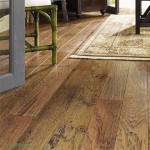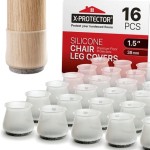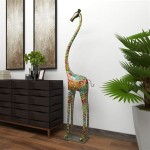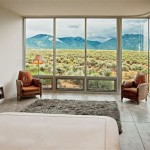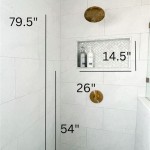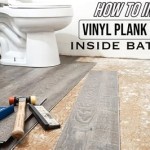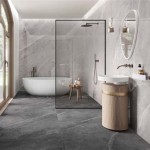Laminate Flooring: Beyond the Wood Grain Illusion
Laminate flooring has established itself as a cost-effective and durable alternative to hardwood and other traditional flooring options. While many associate laminate with its ability to mimic the appearance of natural wood, the material's versatility extends far beyond this single aesthetic. This article will explore the diverse range of styles and applications available in laminate flooring that move away from the typical wood-look designs, focusing on patterns, textures, and materials they emulate.
Laminate flooring, in its essence, is a multi-layered synthetic flooring product. It typically comprises a core layer, often made of high-density fiberboard (HDF) or medium-density fiberboard (MDF), which provides stability and impact resistance. An image layer, a high-resolution photographic print, sits atop the core, providing the desired visual. This image layer is protected by a clear, durable wear layer, often infused with aluminum oxide to resist scratches, stains, and fading. Finally, a backing layer provides additional stability, moisture resistance, and helps to prevent warping.
The development of advanced printing and manufacturing technologies has significantly broadened the design possibilities for laminate flooring. No longer confined to replicating wood grains, manufacturers are now capable of creating laminate floors that convincingly mimic a variety of materials and patterns, offering design flexibility previously unattainable.
Emulating Stone and Tile: A Natural Alternative
Beyond wood, laminate flooring can effectively replicate the look of natural stone and ceramic or porcelain tile. These options offer the aesthetic appeal of stone or tile without the inherent drawbacks such as coldness underfoot, difficulty of installation, and susceptibility to cracking. Laminate stone and tile designs often feature intricate patterns, realistic textures, and even grout lines, enhancing their authenticity.
Laminate stone flooring is available in a variety of stone types, including slate, marble, travertine, and limestone. The image layer accurately depicts the veining, color variations, and subtle imperfections characteristic of each stone. Embossing techniques further enhance realism by creating a tactile surface that mimics the feel of natural stone. These types of laminates are often used in kitchens, bathrooms, and entryways, offering a water-resistant and easy-to-clean alternative to actual stone.
Similarly, laminate tile flooring provides a convincing imitation of ceramic and porcelain tile. Available in various sizes and shapes, including square, rectangular, and even hexagonal options, laminate tile flooring offers a wide range of design possibilities. Grout lines, often achieved through beveled edges or printed patterns, contribute to the authentic tile appearance. These tile-look laminates are particularly appropriate for rooms where the look of tile is desired but the installation challenges and maintenance requirements of real tile are not feasible, such as basements or above-ground floors.
One key advantage of laminate stone and tile compared to their natural counterparts is ease of installation. Laminate flooring typically utilizes a click-lock system, allowing for a floating floor application. This eliminates the need for mortar, grout, and specialized tools, making installation feasible for homeowners with basic DIY skills. Furthermore, the soft underfoot feel of laminate, compared to the hardness of stone and tile, provides added comfort.
Exploring Geometric Patterns and Abstract Designs
Beyond mimicking natural materials, laminate flooring offers a wide array of geometric patterns and abstract designs. These options provide a modern and contemporary aesthetic, ideal for creating a visually striking and unique space. From classic checkerboard patterns to intricate geometric tessellations, laminate flooring can transform a room into a work of art.
Geometric patterns, such as herringbone, chevron, and parquet, are traditionally associated with hardwood flooring. However, laminate versions offer a more affordable and durable alternative. These patterns are often achieved through the arrangement of individual planks or tiles, creating a visually dynamic effect. Laminate's consistent plank size and locking mechanisms ensure precise alignment and a seamless finish, which can be difficult to achieve with real wood.
Abstract designs offer even greater creative freedom. Laminate flooring can feature bold colors, intricate patterns, and unique textures, allowing for the creation of truly one-of-a-kind spaces. These designs can range from minimalist patterns to vibrant artistic expressions, catering to diverse aesthetic preferences. Abstract laminate flooring is particularly well-suited for modern homes, commercial spaces, and areas where a strong visual statement is desired.
The use of color in geometric and abstract laminate flooring plays a crucial role in defining the overall aesthetic. Bold, contrasting colors can create a dramatic and energetic atmosphere, while muted, monochromatic palettes can evoke a sense of sophistication and tranquility. The ability to customize color combinations and patterns allows for the creation of personalized and visually engaging spaces.
Industrial and Concrete Aesthetics: Urban Chic
The increasingly popular industrial aesthetic, characterized by exposed brick, concrete surfaces, and metal accents, can also be achieved using laminate flooring. Laminate designed to resemble concrete or other industrial materials offers a durable, easy-to-maintain, and cost-effective alternative to poured concrete or polished cement floors.
Concrete-look laminate flooring captures the subtle variations in tone and texture that are characteristic of real concrete. The image layer often incorporates realistic imperfections, such as cracks, pits, and color variations, enhancing the authentic industrial appearance. Embossing techniques further enhance the tactile feel of concrete, creating a surface that is both visually and physically convincing.
This type of laminate flooring is particularly well-suited for loft-style apartments, modern homes, and commercial spaces seeking an urban and minimalist aesthetic. The neutral color palette of concrete provides a versatile backdrop for a variety of furniture styles and decor elements.
Beyond concrete, laminate can also mimic the look of other industrial materials, such as metal, exposed aggregate, and distressed surfaces. These options allow for the creation of truly unique and unconventional spaces. The durability and ease of maintenance of laminate make it a practical choice for high-traffic areas, such as retail stores and restaurants.
The versatility of industrial-look laminate flooring extends to its compatibility with other design elements. It pairs well with exposed brick walls, stainless steel appliances, and minimalist furniture, creating a cohesive and stylish industrial aesthetic. The warm underfoot feel of laminate adds comfort to the often-stark industrial environment.
In conclusion, laminate flooring offers a multifaceted approach to interior design that goes beyond the limitations of wood-look alternatives. Its ability to emulate stone, tile, concrete, and abstract patterns provides designers and homeowners with a wide range of creative possibilities. The durability, ease of installation, and cost-effectiveness of laminate flooring further solidify its position as a versatile and practical flooring solution for various applications.

Types Of Laminate Flooring The Home

When Laminate Floor Looks As Good Real Wood Lucy Loves To Eat

When Laminate Floor Looks As Good Real Wood Lucy Loves To Eat

Types Of Vinyl Flooring The Home

What Is Laminate Flooring Made Of America

Laminate Vs Vinyl Flooring A Comparative Guide

Laminate Floor Installation Tips

Laminate Vs Vinyl The Home

Laminate Flooring Products Contempa Floors Calgary

Laminate Vs Vinyl Flooring A Comparative Guide
